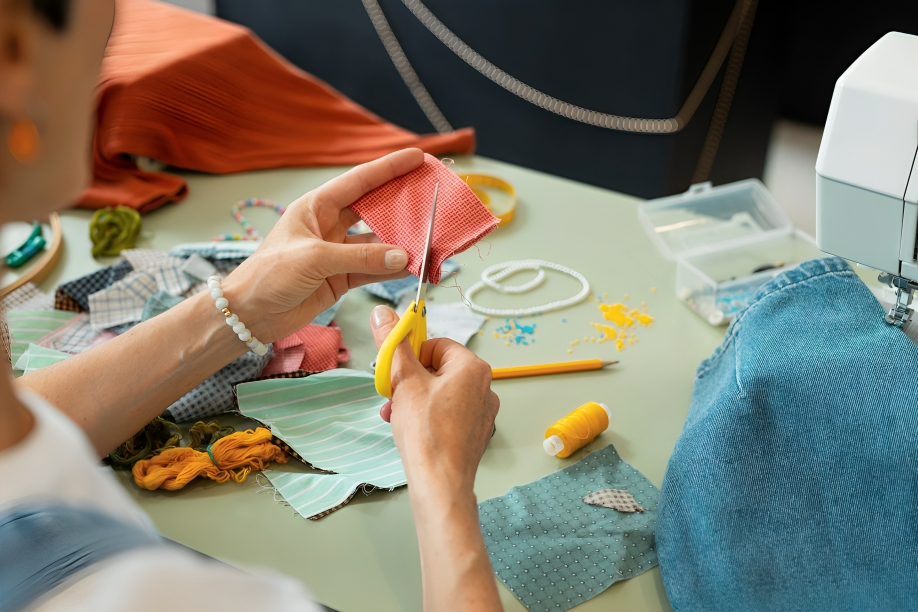Embroidery has long been celebrated as a meticulous art form where skilled hands transform fabrics into intricate works of art. In recent years, however, the craft has undergone a significant transformation, driven by the rise of embroidery digitizing. This process, which involves converting artwork into a digital format that an embroidery machine can read, has revolutionized how we approach crafting in the modern era. From enhancing creativity to improving efficiency, embroidery digitizing is at the forefront of modern crafting.
The Evolution of Embroidery: From Handcrafted to Digitized
Embroidery dates back thousands of years, with early examples in ancient China, Egypt, and Persia. For most of its history, embroidery was a painstakingly manual process, requiring hours, even days, of intricate needlework. Each piece was unique, with the final product reflecting the skill and creativity of the embroiderer.
However, the introduction of embroidery machines in the 19th century marked a significant shift. While these machines allowed for faster production, they still required considerable manual input and design limitations. It wasn’t until the advent of digitizing embroidery in the late 20th century that the craft entered the modern age.
What is Embroidery Digitizing?
Embroidery digitizing converts an image or design into a digital file that an embroidery machine can read. This file tells the machine how to stitch the design, including the order of the stitches, the type of stitches to use, and the colours. The process begins with a graphic, such as a logo, image, or drawing. Using embroidery digitizing software, this graphic is translated into a digital format, typically a .dst or .pes file, that the embroidery machine can understand.
The role of embroidery digitizing software is crucial in this process. It allows designers to refine their artwork, adjust stitch types, and ensure that the final product meets the highest standards of quality and precision. As a result, the software has become an indispensable tool in the modern embroidery industry.
The Impact of Embroidery Digitizing on Modern Crafting
The rise of embroidery digitizing has had a profound impact on modern crafting, opening new possibilities for creativity, efficiency, and customization. Below are some of the key ways in which embroidery digitizing is shaping the craft today:
Enhanced Creativity and Precision
One of the most significant benefits of embroidery digitizing is the ability to create highly detailed and precise designs. Whether it’s a complex logo with multiple colours or a delicate floral pattern, digitizing allows for intricate detailing that would be nearly impossible to achieve by hand. Designers can experiment with stitch types, choose colours and thread types, and textures, ensuring the final product reflects their vision.
Furthermore, embroidery digitizing software’s precision ensures that every stitch is placed exactly where it should be, resulting in a polished and professional finish. This level of accuracy is especially important for businesses that rely on branding consistency, such as companies creating promotional products or uniforms.
Increased Efficiency and Productivity
Embroidery digitizing has significantly increased the efficiency of the crafting process. Once a design has been digitized, it can be reproduced countless times with minimal effort. This is particularly beneficial for businesses that require large quantities of embroidered items, such as clothing manufacturers or promotional product companies.
Digitizing embroidery speeds up production and reduces the margin for error. Since the design is executed by a machine, the risk of mistakes, such as uneven stitches or incorrect colours, is minimized. This saves time and reduces material waste, contributing to a more sustainable crafting process.
Customization and Personalization
One of the most exciting aspects of embroidery digitizing is the ability to customize and personalize designs easily. Whether adding a name to a piece of clothing or creating a unique logo for a brand, digitizing allows designers to tailor designs to individual preferences.
This level of customization is increasingly important in today’s market, where consumers value personalized products that reflect their style and identity. With embroidery digitizing software, crafters can quickly adjust designs to meet specific customer requests, providing a service that sets them apart from competitors.
Access to a Global Market
The internet has opened up a global market for embroidery, allowing crafters to sell their products to customers worldwide. Embroidery digitizing plays a crucial role by making it easy to share designs digitally. A digitized design can be emailed to a customer on the other side of the world, who can then have it embroidered locally. This has expanded the reach of embroidery businesses, enabling them to tap into new markets and grow their customer base.
The Future of Embroidery Digitizing
As technology continues to advance, the future of embroidery digitizing looks promising. Recent updates in embroidery digitizing software have introduced features such as 3D puff digitizing, which allows for raised embroidery that adds texture and depth to designs.
The demand for sustainability is also influencing the future of embroidery digitizing. As consumers become more environmentally conscious, there is growing interest in using eco-friendly materials and reducing waste in crafting. Some embroidery digitizing software now includes features that help minimize thread usage and optimize stitch paths, contributing to a more sustainable approach to embroidery.
Embroidery digitizing has undoubtedly transformed the world of modern crafting. By enhancing creativity, increasing efficiency, and enabling customization, it has opened up new possibilities for crafters and businesses alike. With the continued advancements in embroidery digitizing software and the increasing demand for personalized and sustainable products, the role of embroidery digitizing in modern crafting is set to become even more significant in the years to come. Whether you’re a hobbyist looking to take your designs to the next level or a business aiming to streamline production, embracing embroidery digitizing is essential for staying competitive in today’s fast-paced crafting industry.




